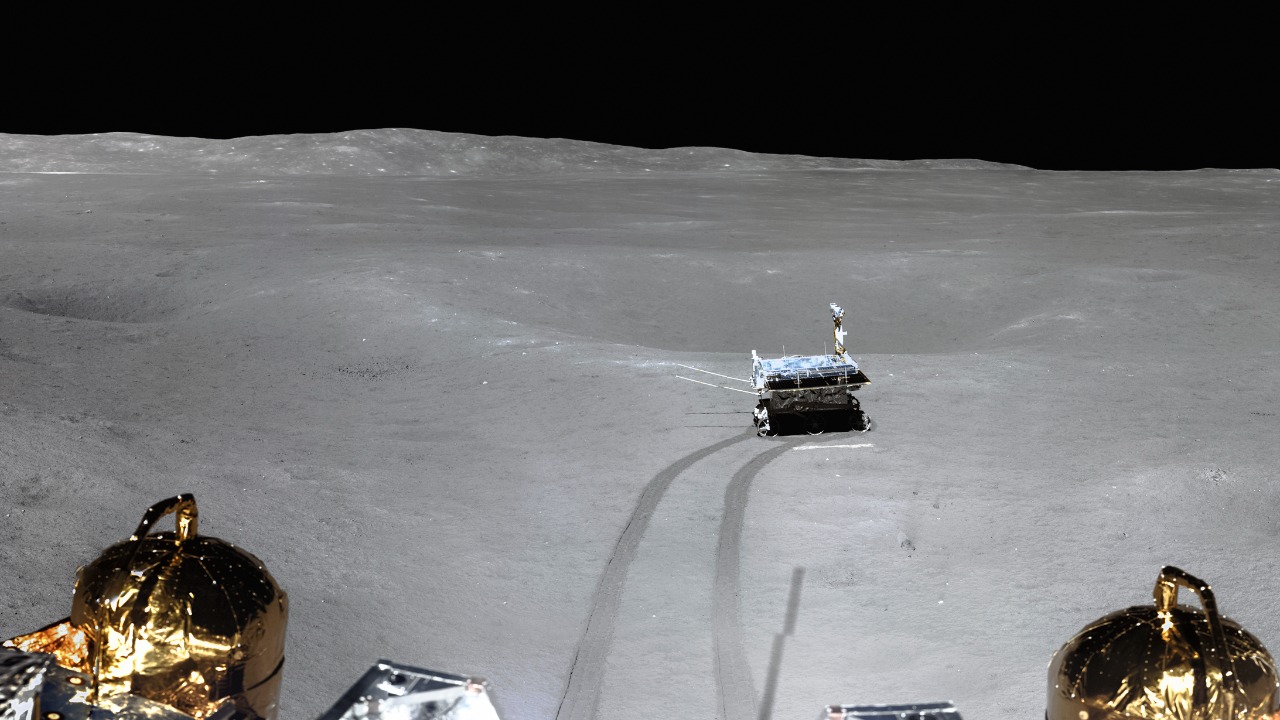
China’s recent lunar missions have unveiled surprising findings that challenge our understanding of the Moon’s geological history. The Chang’e-6 lunar probe, launched in June 2024, has provided new insights into the Moon’s far side, revealing unexpected geological features. Meanwhile, the Chang’e-5 sample-return mission suggested that the Moon might still have active volcanoes, indicating ongoing volcanic activity much more recent than previously believed. Adding to these revelations, recent reports indicate that the Moon is rusting, a process influenced by Earth’s presence. These discoveries suggest that the Moon is far from the geologically inactive body it was once thought to be.
China’s Chang’e Missions and Lunar Exploration
China’s Chang’e-6 lunar probe has been instrumental in expanding our understanding of the Moon’s far side. The mission’s primary objective was to collect samples from this region, which has long intrigued scientists due to its compositional differences from the near side. The Chang’e-6 mission successfully unraveled some of these mysteries, revealing that the far side has a thicker crust and fewer maria, or large basaltic plains, than the near side. This asymmetry is believed to result from early bombardment patterns that shaped the Moon’s geological history. The mission’s findings are detailed in a report by SciTechDaily. In addition to Chang’e-6, the Chang’e-5 sample-return probe has provided groundbreaking evidence of potential recent volcanic activity on the Moon. By analyzing the lunar material brought back by the probe, scientists have discovered basaltic rocks that are only about 100 million years old. This finding suggests that volcanic activity on the Moon may have persisted much longer than previously thought, challenging the notion that the Moon has been geologically inactive for billions of years. The implications of this discovery are explored in a report by Space.com. These missions are part of China’s broader lunar exploration program, which aims to establish a significant presence on the Moon. China’s efforts include plans for international collaboration, as well as competition with other space powers. The discoveries made by the Chang’e missions have intensified the global race for lunar exploration, prompting other nations to accelerate their own lunar initiatives.
Unexpected Geological Discoveries on the Moon
The findings from the Chang’e-5 sample-return probe have profound implications for our understanding of the Moon’s geological history. The discovery of relatively young basaltic rocks suggests that the Moon might still have active volcanoes, a revelation that contradicts the long-held belief that the Moon has been geologically dormant for billions of years. This discovery opens up new avenues for research into the Moon’s volcanic history and its potential for ongoing geological activity. In addition to volcanic activity, recent reports indicate that the Moon is rusting, a process influenced by Earth’s presence. According to a report by NotebookCheck, Earth’s oxygen is being transported to the Moon via the solar wind, where it reacts with lunar iron to form hematite, a type of rust. This unexpected process highlights the complex interactions between the Earth and the Moon, challenging our understanding of the Moon’s surface chemistry. The Chang’e-6 lunar probe has also contributed to our understanding of the Moon’s far side, revealing geological features that differ significantly from those on the near side. The thicker crust and fewer maria on the far side suggest a history of early bombardment asymmetries that have shaped the Moon’s geological evolution. These findings provide valuable insights into the processes that have influenced the Moon’s development over billions of years.
Geopolitical Race for Lunar Resources and Technology
The discoveries made by China’s Chang’e missions have intensified the geopolitical race for lunar resources and technology. The United States, in particular, is ramping up its efforts to establish a sustainable presence on the Moon. As part of this effort, the U.S. is working to deploy a nuclear reactor on the Moon, a move that underscores the strategic importance of lunar exploration. This initiative is part of a broader push to develop advanced space power systems in response to the growing influence of China and Russia in space exploration. Details of this effort are discussed in a report by The Debrief. NASA’s motivations for returning to the Moon are driven by the desire to establish a sustainable presence for scientific research and resource utilization. The agency’s Artemis program aims to land the first woman and the next man on the Moon, with the goal of establishing a long-term human presence. This initiative is part of a broader strategy to explore the Moon’s resources and develop technologies that will enable future missions to Mars and beyond. The rationale behind NASA’s lunar ambitions is outlined in a report by Lighthouse. China’s recent discoveries have added urgency to these efforts, prompting accelerated international initiatives to secure lunar sites for future bases and energy infrastructure. The competition for lunar resources is not only a matter of scientific exploration but also a strategic imperative, as nations seek to establish a foothold on the Moon and leverage its resources for future space endeavors. As the race for lunar exploration heats up, the stakes are higher than ever, with significant implications for the future of space exploration and international relations.